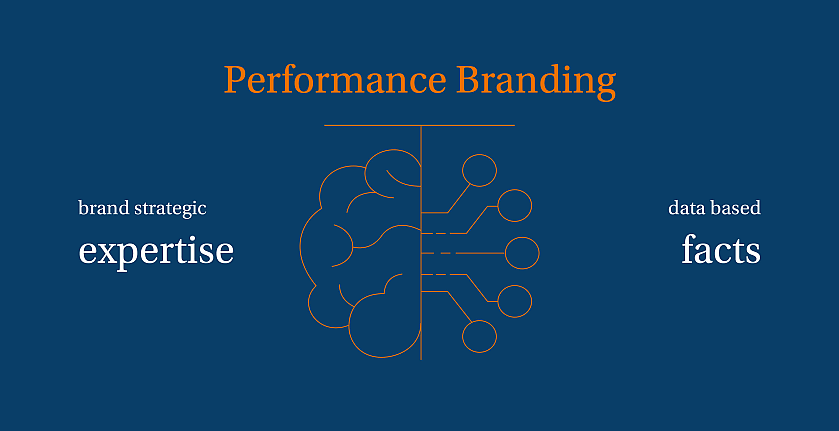Glossary
Pain Points
Pain Points
Pain Points

Pain points are critical brand touchpoints a customer encounters along his customer journey. Every badly managed touchpoint that is not designed in keeping with the brand leaves the customer with a negative experience – so it is a pain point. If there are too many badly managed touchpoints along a customer journey, the overall customer experience turns negative.
For example, if the online ordering process of a product is too complicated or not smart phone compatible, the brand touchpoint "order process" becomes a pain point that negatively impacts the customer's decision. The customer might turn away and go to the competitor Amazon – where the order process works with one click.
Pain points exist not only in direct customer contact, but off stage as well: Buying decisions are often negatively impacted by negative reviews from other buyers posted on portals, or when a good friend does not recommend the brand. When a buying decision is negative, all pain points are essential. The building of a customer journey must therefore focus on identifying these pain points and optimizing them to become "gain points".
Once all pain points are identified and checked against the brand rules, the first optimization ideas for better brand embedding can be generated.
A positive customer experience only results when the brand, its core values, and its positioning can be experienced at all touchpoints. Such gain points create enthusiasm and turn customers into fans.
Our recommendation:
Study: From product to experience – how brand touchpoints become the total experience
Peak Performances
Peak Performances
Peak Performances

The peak performances of a company are the foundation of any brand and its brand formation. The brand is the condensed expression of these peak performances.
The first step is to identify the peak performances:
- What made the brand successful in the past?
- What does the company do best, strongest, fastest, greatest?
These peak performances must be tangible at all brand touchpoints.
Strong brands know what performances they can deliver consistently. They concentrate on those, express them, and thereby stir desirability. Everything they do is geared toward this one thing.
In short: They do what they do better than anyone else - consistently.
Only when a company delivers (peak) performances permanently in consistently high quality can these performances settle into brand values.
Example Faber-Castell: The peak performance of Faber-Castell emerged from the company's history and is called "wood pencils of premium quality". Founded in 1761, Faber Castell is now the oldest and worldwide largest company specialized in wood-mantle pencils and color pencils. Now in its 8th generation, Faber still produces color pencils, drawing pencils, and writing pencils in excellent quality, and does so sustainably and fairly.
Example Volvo: The peak performances of Volvo are based on the guiding principle of safety. This one idea defines everything the auto maker does. Even back in 1927, Volvo founders Assar Gabrielsson and Gustaf Larson made it their central dictum.
Performance Branding
Performance Branding
Performance Branding

Performance branding
The term "performance branding" describes a multi-dimensional analysis that gives companies instant insights into the performance of their brands—in real time. Company management and marketing can use the results to react immediately or even act in advance.
What is special about performance branding?
For many companies, the measurement and quantification of brand success is a sore spot—and fervent wish all at once. Performance branding solves this problem with a combination of big data, artificial intelligence and brand-strategic expertise.
How is it different from performance marketing?
The widely established practice of "performance marketing", as the name suggests, is geared toward marketing efficiency. Performance branding, on the other hand, provides a 360° view: of customers, competitors and company. It lets you examine the many developments from all perspectives and use them as a basis for decisions.
What insights does performance branding give you?
Performance branding delivers insights and solutions in six dimensions:
- Brand persona
- Brand marketing
- Brand strength
- Internal & employer branding
- Brand market audit
- Brand ad-hoc insights
All brand-relevant market activities are checked for efficiency, using customer, employee and stakeholder reactions. The company receives a real time snapshot of current brand perception at its relevant brand touchpoints.
The company finds out which campaign was successful, why it was effective and with whom. The competition's campaigns can be analyzed the same way. With the results, marketing and the entire communication can be precisely tailored to focus on the different existing target groups as well as new desired target groups.
Performance branding helps to reach the right consumers and compare the competition's buyers with your own customer base.
Use in employer branding
Performance branding can also be used to optimize and focus measures in employer branding. It provides answers to questions like "How great is our employee pride?"—"How attractive is our employer brand?"—"What is important to our employees?" or "Who is my employee persona?"
Use in distribution and sales
Performance branding also allows you to create a geographic illustration of where your customers, fans and community live. Such an analysis is a great way to show where a flagship store would make sense or where a community event should be held. Further, you can identify white patches on the map that you can conquer. And you'll see where you are expending pointless effort to fight the competition.
Why we developed performance branding:
- Transparency: The method reveals the optimization potential of brands in real time, both on a topical level and in for specific brands.
- Guidance: The tool delivers appropriate solutions for the analyzed problems.
- Control: Brand and market developments are constantly monitored.
Frequently used methods of analysis—an overview
- Market research: Usually topical in orientation, it gives answers to individual questions based on experience or preference (e.g. survey, observation of a defined group, etc.).
- Social media monitoring: All social media activities of a brand can be illustrated and analyzed by channel.
- Sentiment analyses: Barometer of topics and brands in social or also linear media.
- Performance marketing: This specifically shows direct resonance to a certain activity in a selected channel. However, it provides no reason for the result in question, no glimpse behind the scenes.
- Performance branding: Comprehensive illustration of all relevant company activities and their impact on the brand, customers of different age groups and differentiation from the competition. It combines brand-strategic expertise and data-based facts generated with big data and artificial intelligence. The goal is to make planning for the future more reliable, strengthen competitiveness and boost the brand's earning capabilities.
Performance Marketing
Performance Marketing
Performance Marketing

Performance marketing is an online marketing approach. It aims to trigger measurable reactions from recipients. A reaction can be, for example, a click on the website or a product purchase.
Origin of performance marketing
Although the term "performance marketing" has only been used since around 2008, there were already many online marketing measures in place to generate measurable responses.
One of the first examples is probably the US online music shop CDNOW in 1994: it gave website operators a share of the sales generated by advertising on their pages.
What are the advantages of performance marketing?
When people's reactions are recorded using real-time analyses, the success of a campaign can be evaluated quickly. Key figures such as ROAS (Return on Advertising Spend), CTR (Click Through Rate) or CVR (Conversion Rate) are used for this purpose.
In addition, different parts of a campaign can be viewed and optimised separately. The costs are transparent and can be flexibly adjusted to the budget.
Overall, performance marketing enables continuous improvement of the marketing strategy.
Areas of application for performance marketing - an overview
The principle of performance marketing is used in various digital channels, for example
- in social media marketing
- in search engine advertising (SEA)
- in search engine optimisation (SEO)
- in affiliate marketing
Its versatility enables companies to spread and measure their brand messages across different platforms. In this way, the efficiency of each individual campaign can be closely monitored.
How are performance marketing and performance branding connected?
Both approaches use extensive data analyses to make well-founded decisions:
- Performance marketing uses data to measure and optimise the success of online campaigns.
- Performance branding takes a holistic view: it not only analyses marketing activities, but also the entire brand perception.
Overall, companies benefit from the intelligent integration of both approaches: Performance branding provides the foundations for managing a strong brand. The findings from this flow into the development of campaigns, among other things, which in turn are analysed with the help of performance marketing.
This means that marketing activities should not be viewed as isolated campaigns, but as part of the overall brand experience that inspires customers to take action.
From a brand strategy perspective, performance marketing is therefore not just a tool for greater efficiency and short-term sales growth. It is also a key component in strengthening a brand in the long term and giving it meaning.
Do you have any questions or suggestions about the glossary or would you like further information? We look forward to receiving your e-mail.
Personal Branding
Personal Branding
Personal Branding

When a person develops into a brand, it is called personal branding or human branding. The person becomes the focus, their personality, competences, and performances. As with other brands, we can talk about brand core values and peak performances.
Megastars like Madonna or Mick Jagger practice professional personal branding: They use the rules of brand management and have made themselves into brands.
A person only becomes a brand if ...
- they have a unique, clearly defined personality,
- they develop in self-similar ways,
- they communicate values, and
- they act consistently.
If they can do all that, they are perceived similarly by different people, for example as an expert on a certain subject. A strong personal brand has a clear message that illustrates what the personal brand stands for.
There are five essential factors that are necessary for a strong personal brand:
- Brand substance: The personal brand is based on performances and values.
- Authenticity: The internal and external images match. That means: The personal brand and the values correspond to one another.
- Recognizability of the brand: It is presented specifically, assertively, and clearly.
- Differentiation: The person differentiates themselves from others through specific competences. Their brand maintains a clear positioning and has an individual style.
- Continuity: The building of a personal brand is a continuous process that is never finished.
Personas
Personas
Personas

A persona – also called "buyer persona" – is a highly precise customer profile: It integrates the behaviors, preferences, wishes, fears, needs, and desires of a person. This detailed and emotional description allows companies to better understand their customers.
Typical target group descriptions are just subsets of the overall market. Their only common features are demographical, geographical, and psychological traits – and that is not meaningful enough for brand management.
Ozzy Osbourne and Prince Charles, for instance, have the same gender, and were born in the same year. Both grew up in Great Britain, are married, and like to vacation in the Alps. But as consumers, the two have nothing in common: They have different interests, different desires and behaviors. If a brand concentrated purely on the demographical and geographical properties of this target group, its brand strategy would most likely be doomed to failure.
Strong brands therefore need personas for orientation, so they can address the right people with the right brand messages at the right time. This is how content becomes relevant and attention increases. The brand communication improves because a company is in a better position to act from the customer's perspective.
Personas are also the basis and foundation of the customer journey. One customer journey is generated for each persona in order to understand what the customer does when and for what reason. It makes sense to create several personas in order to generate the appropriate content for each. For instance, a financial services provider might generate a corporate client persona, a private client persona, and a private banking persona.
It is essential to give each persona a name, add a fitting picture, and define a typical statement for that persona. This makes the personas more tangible, more personal, and it is easier to identify them. The company can always ask: "What would Betty think of this? Or Frank?"
Pharma Brand
Pharma Brand
Pharma Brand

The pharmaceuticals industry typically speaks of a brand and a brand strategy when an active ingredient is given a brand name and sold with the aid of marketing. However, that is only one of several ways how a pharmaceuticals company can use a brand.
What kinds of pharma brands are there?
- Product brands: The product is the hero. This applies mainly to original drugs that are extremely expensive.
- Family brands: All products are joined under a performance name. The classic ratiopharm strategy with brand names like "ratiopharm NasenDuo" is an example of this kind of brand.
- Corporate brands: The manufacturers themselves are the source of trust (e.g. Henkel or Bayer). This is important for endorsement and employer branding.
Each strategy is defined in a logically inferred brand architecture.
Since the pharmaceuticals industry is currently suffering from a general lack of trust and a lack of qualified personnel, it is becoming more and more conscious of the corporate brand. A company then uses its brand strategy not just as a marketing strategy but bundles all activities in a brand promise, which is made tangible at all brand touchpoints. One example is Merck with its one-word equity "curiosity".
Because the pharmaceuticals industry is also marked by extreme competitive pressure that makes growth exceedingly difficult to achieve, many corporations try to grow by means of acquisitions. This presents them with two brand strategic challenges:
- They have to integrate the acquired pharma brands reasonably in their portfolio and brand architecture.
- They have to create stable, value-generating family and performance brands that will withstand the profound changes and preserve the core of their strengths.
Price premium

We speak of a price premium when customers are willing to pay more for a brand-name product than for comparable products by a competitor. It is what characterizes strong brands.
For example, customers pay substantially more for Evian water than for weaker brands:

How do you achieve a price premium?
Consumers assess the benefit of a product using two criteria:
- its objective performance – meaning the actual product quality
- its subjectively perceived performance – meaning the brand performance
A price premium can be achieved when the benefit of a product for the consumer is greater than its pure performance (1). This happens because of the brand (2).
Another example: Both Louis Vuitton and the fashion discounter Kik produce handbags that are made to transport things (objective performance). The appreciation of such a bag – and with it the willingness to pay a significant price premium – grows out of the subjective benefit (brand performance). In the luxury segment, which is where Louis Vuitton operates, social acceptance, status and a feeling of superiority are among the most common motivations.
To escape interchangeability, brands need these fundamentals:
- concentration on the core of the brand
- outstanding peak performances
- brand-specific experiences.
Only incomparable performances result in a price premium. This is how the brand contributes to increasing sales.
Companies who want to liberate themselves from pure product orientation invest in their brand communication by adding measures to sensitize the customers' perception – perhaps through positive preconceptions or associations.
What makes a brand incomparable:
- Dramatizing the added value: Making the product more valuable. It has to solve a problem better than the competition does.
- Using the entire value chain: Looking at not only the relationship with direct customers but at the entire value chain.
- Changing the basis for assessment and fulfilling life scarcities:
Not just a grille, but the "World of Barbecue" (Weber). Not just a taxi ride, but the experience of a "Private Driver" (Uber).
Pricing
Pricing
Pricing

With a pricing strategy, a company defines the pricing logic and price positioning for its goods and services. Well thought-out pricing is one of the foundations for healthy growth and is decisive for a company's success.
Currently, pricing is of particular importance because the economic environment - high inflation rates, rising costs in logistics and greater logistical effort - makes price increases unavoidable.

How pricing works
In order to design optimal pricing structures, it is not enough to rely solely on a mathematically-centred pricing logic that is based on production costs and adds a targeted profit. Nor should one listen to gut feeling and intuition alone or orient oneself solely to the competition.

In order for a company to set the desired prices, it needs an emotional value logic (value-based pricing) in addition to the rational price logic. Only through the interaction of these two perspectives can the optimal price be determined and enforced.
Why do we need a value logic? Only when people perceive and appreciate the value of a brand are they willing to pay more for it. Take BMW, for example: In addition to the vehicle itself, BMW sells the one-word value that the brand has built up over the years: Joy.
If this value (a car that is more fun to drive than those of the competition) is conveyed with the product and valued by people, the product is a brand. It is incomparable, which is why its price can be decoupled and shaped from the pure product performance.
A brand thus lends meaning to an offer, it adds subjective value to the purely objective benefit. The key to price optimisation thus lies in the "non-functional".
How does pricing succeed with the help of the brand?
The brand is indispensable for pricing because it determines the value logic - this applies to B2S, D2C and B2B. Strictly speaking, the brand was invented for this purpose alone: that it inspires people with its values and thus higher prices can be enforced.
This is why brand management must be involved in pricing; it is not the sole responsibility of management and sales. Just like brand experiences and the associated reputation, it is a task for everyone in the company. Because, quite clearly, people are generally willing to pay more for a brand with a high reputation and a good reputation.
Highlighting excellence: Most companies are sitting on a treasure that they only need to lift to gain more "pricing power": It is their top entrepreneurial achievements, which they have not yet communicated and made perceptible in sufficient detail.
Triggering emotions: When a brand skilfully addresses people's wants and needs, it triggers positive feelings. This is of great importance because 95% of purchasing decisions are made subconsciously. Often people cannot explain why they favour a brand. They then simply say "I think the brand is cool" or "I kind of like the brand". Such positive associations remain stored in the brand and can be transferred to other products and services.

This is how you can implement price increases
A price increase alone will not lead to success, such an approach is useless. Likewise, upcycling does not work if it is accompanied by a new campaign. Instead, a price increase must be supported by top performance and an extended benefit argument - embedded in an attractive storyline. Often, even the business models and processes have to be adapted to achieve a higher appreciation - and thus a higher willingness to buy - of people.It is crucial that people change their attitude towards the brand. This starts in the company itself. Only when views and evaluations change there, can a valuable top brand emerge from an average brand that yields high returns.Read more about this in the glossary article on uptrading
Beware of discounts
Limited price reductions make sense to compensate for seasonal fluctuations or to reward regular customers for their loyalty. However, price cuts make no sense if they are initiated out of panic and cannot be easily reversed. People quickly get used to lower prices - and this usually weakens brand attractiveness, which is indispensable for a long-term pricing strategy and for later price increases.
What is a price premium?
A price premium is when shoppers are willing to pay more for a branded product than for comparable offers from the competition. It can only be achieved with incomparable performance - and every brand can be incomparable beyond the purely functional level. The price premium is a sign of strong brands and helps to increase sales. You can find out more about this in the glossary article Price premium
10 Quick Wins - how to increase your price assertiveness
- never forget: The added value that people perceive beyond the pure functional product benefit is what determines sales success, not the price!
- decide what your brand should stand for, otherwise you will become interchangeable and have to surrender to the price war.
- develop a clear positioning with constantly repeating messages.
- Condense your excellence and the value it creates to its essence.
- build your appeal: Awareness alone is not enough for a price premium.
- invest everything in building trust. A person who trusts thinks less.
- develop a distinctive brand style: your brand must be clearly recognisable at first glance.
- do everything to have an incomparable offer, otherwise the lowest price will win.
- avoid discount promotions: If in doubt, accept sales reductions instead.
- Develop a storyline in which the customer is the hero.
Do you have any questions or suggestions regarding the glossary article or would you like further information? We look forward to receiving your e-mail.
Product Brands
Product Brands
Product Brands

Product brands refer to the individual products of a company and are the foundation of its brand world. They are at the lowest and most granular hierarchy level of the brand architecture. Examples of well-known product brands are Coca-Cola, Nutella, and Ariel.
Often there is a multitude of product brands within an organization. For the sake of efficient brand management, they are frequently integrated in an umbrella brand or brand family system (as with Unilever). Individually managing the separate product brands is also an option, but it requires more resources.
The product brand's primary job is to influence and simplify the consumer's buying decision at the point of sale (PoS). This is done by means of a clear positioning at all relevant brand touchpoints, as well as a familiar look and unambiguous codes (as with logos and colors) that stay the same over long periods of time. The customer finds orientation and trusts the brand, which can often result in a significant price premium.
The brand-strategic requirement is to give the product brand a personality the customer can easily recognize. Only when this is done successfully will it manifest in increased sales through the brand.
The highest level of product brand development is reached when it has relevance beyond its own business sector and becomes iconic. These strong product brands exert such enormous attraction that customers will even follow them to other retailers.
Get in touch with us
Would you like to arrange a non-binding telephone call with us or do you have questions about our offer? Then simply fill out this form and we will get in touch with you as soon as possible.
